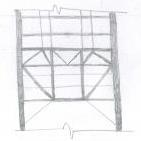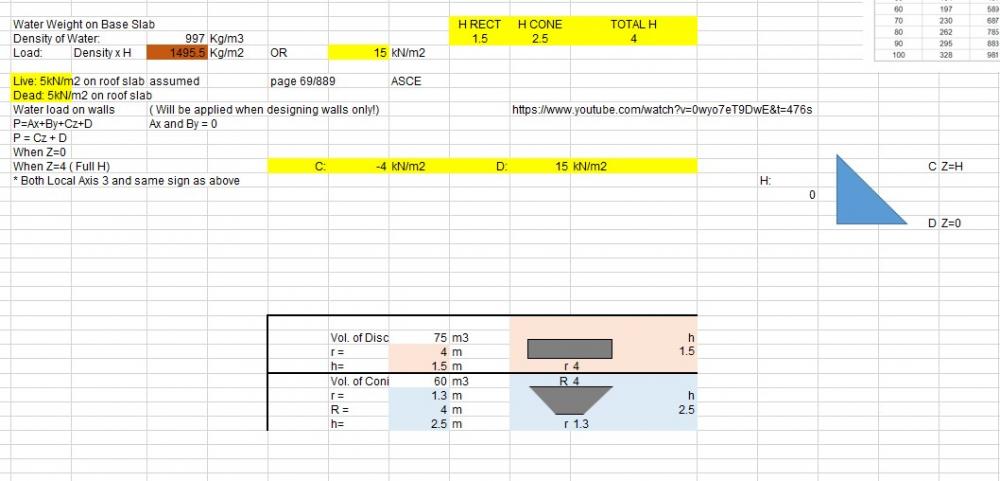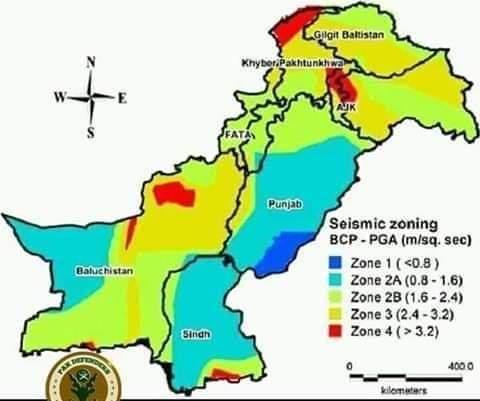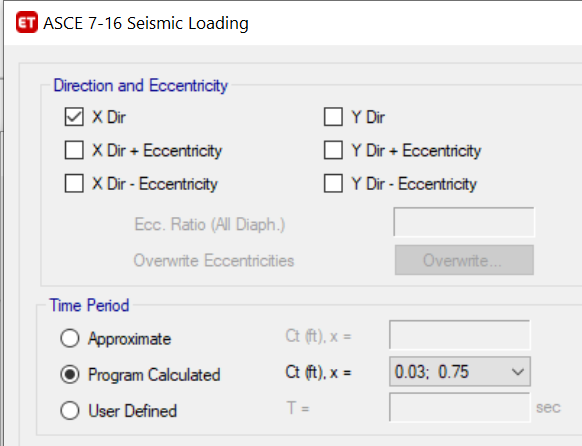-
Posts
19 -
Joined
-
Last visited
Profile Information
-
Gender
Male
-
Location
Lahore
-
University
University of Lahore, Edinburgh Napier University
-
Employer
The Urban Unit
Recent Profile Visitors
2,403 profile views
Omer Ahmed's Achievements
-
 Omer Ahmed reacted to a post in a topic:
Design of Masonry Wall Footing
Omer Ahmed reacted to a post in a topic:
Design of Masonry Wall Footing
-

Help needed with Disaster Resilient Masonry House Structure
Omer Ahmed replied to Omer Ahmed's topic in General Discussion
Thanks Hamza for referring to the useful material. -
 Omer Ahmed reacted to a post in a topic:
Help needed with Disaster Resilient Masonry House Structure
Omer Ahmed reacted to a post in a topic:
Help needed with Disaster Resilient Masonry House Structure
-

Help needed with Disaster Resilient Masonry House Structure
Omer Ahmed replied to Omer Ahmed's topic in General Discussion
I am drowning and you're defining the water 😃 -
 Omer Ahmed reacted to a post in a topic:
Connection between wall and slab of ground floor
Omer Ahmed reacted to a post in a topic:
Connection between wall and slab of ground floor
-

Help needed with Disaster Resilient Masonry House Structure
Omer Ahmed replied to Omer Ahmed's topic in General Discussion
Thanks Babar for referring me to the Code... also a bit change in plans and I have changed it to a basic RC frame structure with Masonry fill walls... Any chance you can guide me to the right Code (preferably with pages) or notes where I can find the formulas for determining the Permissible Shear Stress, T & C Stress and Axial Forces, Max. Bending and Max deflection so I can compare the software determined values with the Max./Permissible ones. I am using ACI 318 as design code. Thanks. -
 Omer Ahmed reacted to a post in a topic:
Help needed with Disaster Resilient Masonry House Structure
Omer Ahmed reacted to a post in a topic:
Help needed with Disaster Resilient Masonry House Structure
-
 Omer Ahmed reacted to a post in a topic:
Which Code to Select in Etabs after BCP 2021
Omer Ahmed reacted to a post in a topic:
Which Code to Select in Etabs after BCP 2021
-
 Omer Ahmed reacted to a post in a topic:
Checking Bending Moment and Shear Forces using ETABS
Omer Ahmed reacted to a post in a topic:
Checking Bending Moment and Shear Forces using ETABS
-
 Omer Ahmed reacted to a post in a topic:
Masonry Design Guidelines
Omer Ahmed reacted to a post in a topic:
Masonry Design Guidelines
-
 Omer Ahmed reacted to a post in a topic:
Masonry Design Guidelines
Omer Ahmed reacted to a post in a topic:
Masonry Design Guidelines
-
 Omer Ahmed reacted to a post in a topic:
Masonry Design Guidelines
Omer Ahmed reacted to a post in a topic:
Masonry Design Guidelines
-
Dear all, I need some help with masonry structure design which I am working on for proposal to the World Bank for funding for disaster resilient houses for flood affected areas. Deadlines given to me are very strict so I am just unable to grasp onto the design of Masonry Structures in detail w.r.t. ACI design code. Currently I have been able to make a basic model on ETABS (v18) and have to check my results (which are relatively simple for common RC structures) however for Masonry structures permissible limits I am just unable to find in ACI Code. Any chance someone can simplify those limits for me for me please? like any notes, or on message, related page numbers etc. Also if any expert can spare some time and check my model for any potential mistakes because it's been a little while since I used this software. P.S. I am working for a Public Company so there is no financial benefit whatsoever and is more of a voluntary support which my company is providing for flooded regions. Thanks for the read.
-
Hi all, I need some help with retaining wall design. How seismic factors kv/kh (as in UBC97) or cv/ch (as in BCP) are calculated? also how to develop relation between seismic zone of BCP and UBC97? I mean Islamabad/RWP is classified as Zone 2B (PGA value: 1.6-2.4) however same city is classified as Seismic zone 4 in UBC-97, now the problem is that modern software uses IBC so I can used data of UBC97 but how do I find equivalence of seismic zone? Many thanks
-
 Omer Ahmed reacted to a post in a topic:
Moment resistance of Pinned/Hinged structure?
Omer Ahmed reacted to a post in a topic:
Moment resistance of Pinned/Hinged structure?
-
 Fatima Khalid reacted to a post in a topic:
Structural Dynamics and Earthquake design lectures
Fatima Khalid reacted to a post in a topic:
Structural Dynamics and Earthquake design lectures
-
@waqar saleem Thanks for the answer to my first question, as for my second question what I mean to ask is how come there is too much variation for Time period in the same building? Once, Time Period is used in Seismic Loading data (value = 0.030 for concrete structures calculated by program- FIXED value!) and then there's Time period table which we usually get as an Output ( from tables or Mode shapes) after analysis which is way higher than 0.030 and comes out to be around 1 sec for 8 story RC building. Are these both different time periods or the same? why there is so much difference in the values? Is "Fundamental Time Period" differ than the "Time Period"? Thanks
-
@Badar (BAZ) Thank you for your answer. May I ask how we can differentiate between both the time periods? how do we know which one is to be used and where?
-
Omer Ahmed changed their profile photo
-
I was just looking at ACI/ASCE method for seismic design and had a general question about this new spectrum analysis method. Quest 1 : As it says in the code to use values of (SA 0.2 sec, SA 1sec) which means generalized Time periods are taken as 0.2 for short and 1 sec for tall buildings for given site. Why these time period values are generalized? Isn't it very common for a structure to have a time period way greater than 1 sec?. How we design for buildings having more than (say) 30 stories if we restrict its time period to just 1 sec (maximum)? Quest 2: What is difference between fundamental time period (usually varies from 0.7 to 1.X) which we find as a result, and the one we use in the ETABS seismic data (i.e. 0.030 for concrete)?
-
 Ayesha reacted to a post in a topic:
Structural Dynamics and Earthquake design lectures
Ayesha reacted to a post in a topic:
Structural Dynamics and Earthquake design lectures
-
 UmarMakhzumi reacted to a post in a topic:
Structural Dynamics and Earthquake design lectures
UmarMakhzumi reacted to a post in a topic:
Structural Dynamics and Earthquake design lectures
-
Just found an amazing website with lectures on Structural Dynamics and Earthquake Engineering in Pakistan. https://structurespro.info
-
Can someone please explain why we normally prefer Fixed beams in high rise buildings/structures? Does Fixed beam performs better than Simply Supported beam?
-
Normally we assume base of a structure to be Hinged or a Pinned base, my question is how does moment resists in Pin/Hinge based structures? where does moment transfers from sub-structure if foundation is isolated and not fixed to the ground i.e. with piling etc.?
-

Checking Bending Moment and Shear Forces using ETABS
Omer Ahmed replied to Omer Ahmed's topic in Software Issues
Thanks for your help! -
@Simple Structures Nicely explained. Pardon my ignorance but could you please explain how moments are resisted from foundation/footing if we assume base to be behaving like a pinned/hinge support?
- 20 replies
-
- pin support
- fixed ends
-
(and 1 more)
Tagged with:
-
@Ayesha Pardon my ignorance, so I used to opt for UBC since it have earthquake zones of Pakistani cities. Does IBC or ACI have that as well? The problem with UBC is that it doesn't come in every version of ETABS. I am familiar with Eurocode and ACI but do I need to feed earthquake zone data in Etabs as well if I go with them?








